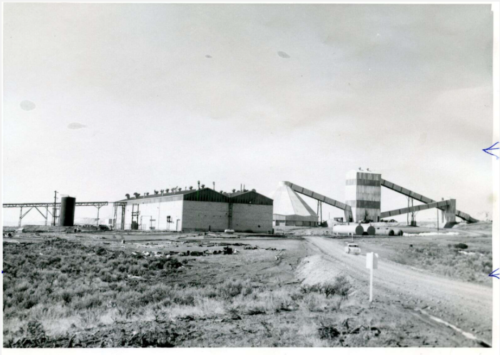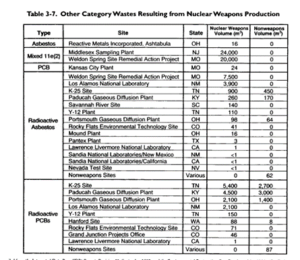
CWP Blog | CWP
Talk to Terrie: DOE’s Summary of Nuclear Weapon Production
March 30, 2022
March 30, 2022
CWP
CWP Blog
Did you ever wonder about the path from taking uranium ore out of the ground to the final nuclear weapon? When I started researching for this blog, I was hoping to find a flow chart that would easily show the steps. Unfortunately, I could not find an easy-to-read graphic. Fortunately, I remembered a 1997 document published by the U.S. Department of Energy, Linking Legacies.
Just skimming the document shows you how complicated the process is. The flow charts found on pages 120-123 shows how complex the process was.
While the main focus of this document is to identify the waste produced by the different processes, there is some information that could be helpful with some claims, especially for workers employed in the early years. Granted, the process information in the document is limited but it may just help someone.
For instance, it is commonly known that Y-12 had an environmental problem with mercury. According to the Division of Energy Employees Occupational Illness Compensation (DEEOIC) Site Exposure Matrix (SEM), exposure to mercury result in the development of chronic kidney disease, contact dermatitis, toxic neuropathy, mercury poisoning, and toxic pneumonitis.
DEEOIC often requires a claimant to show how and where they were exposed to a toxic chemical. Let’s say, for example, a survivor filed a claim for neuropathy due to mercury exposure. The DOE employment records show that the worker was involved with enriching lithium. This one paragraph may help prove mercury exposure:
Lithium Enrichment – Lithium enriched in the lighter lithium-6 isotope was placed in production reactors to produce tritium and was also chemically compounded with deuterium to be used as a component in nuclear weapons. Natural lithium is about 7.5 percent lithium-6 and 92.5 percent lithium-7. Lithium was enriched at the Y-12 Plant in Oak Ridge, Tennessee using the column exchange (COLEX) and electric exchange (ELEX) processes. Both lithium enrichment processes used large amounts of mercury, and as a result, mercury is a major feature of the contaminated environmental media legacy at Y-12. (Page 31)
Lastly, I’d like to call your attention to the chart on Page 59. I was surprised to see that DOE acknowledge that there are two separate waste categories for asbestos and PCBs. The first group is the run-of-the-mill toxic substance and the other is enhanced by radiation.
I don’t know if the health effects of radioactive asbestos or radioactive PCBs would increase due to the addition of radiation. It makes sense to me that exposure to these combos would be worse than just being exposed to the non-radioactive materials. I will do more research and if I find anything I will write another blog.


